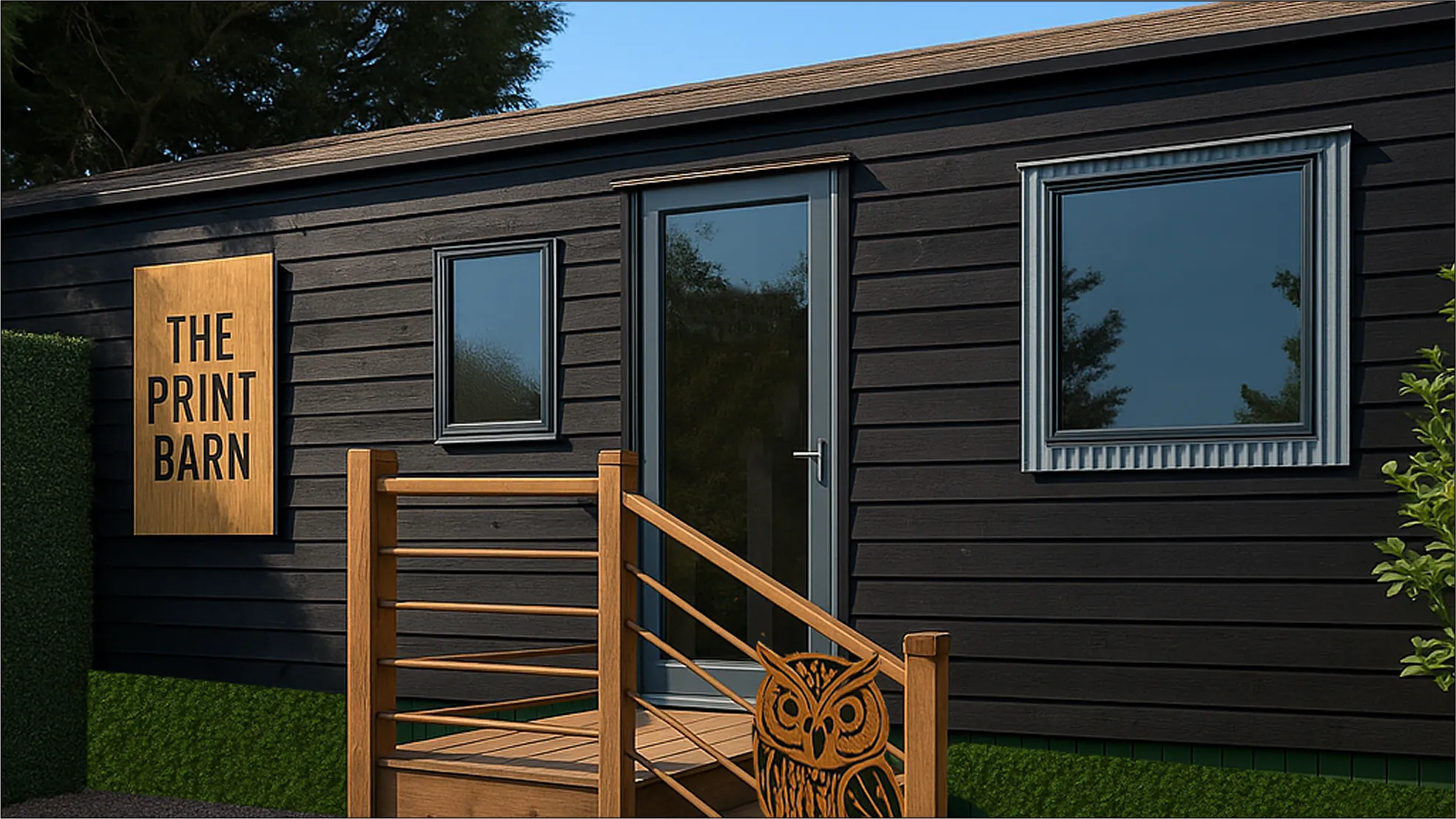
Small businesses across the UK face constant pressure to maximise marketing impact whilst controlling costs. With printing representing a significant portion of many businesses' marketing budgets, understanding how to achieve professional results without overspending is crucial for long-term success. This comprehensive guide will help you create an effective printing strategy that delivers results within your budget constraints.
Understanding Your Printing Needs
Before allocating budget, conduct a thorough audit of your current printing requirements. Document everything from business cards and letterheads to marketing materials and signage. This baseline assessment reveals spending patterns and identifies areas for optimisation.
Seasonal variations significantly impact printing needs. Many Isle of Sheppey businesses experience fluctuations based on tourism, school terms, or industry cycles. Understanding these patterns helps you budget appropriately and avoid rush charges during peak periods.
Priority classification helps allocate resources effectively. Essential items like business cards and letterheads require consistent quality, whilst promotional materials might allow for more budget flexibility. This classification ensures critical materials receive adequate funding whilst identifying areas for cost savings.
Budget Planning and Allocation
Industry benchmarks suggest that small businesses should allocate 3-5% of revenue to marketing, with printing typically representing 10-15% of marketing budgets. However, these percentages vary significantly based on business type and customer demographics.
For service-based businesses, professional materials like business cards and brochures often require higher per-unit investment but lower quantities. Retail businesses might prioritise point-of-sale materials and promotional items with higher volumes but lower per-unit costs.
Create quarterly budget allocations rather than annual lump sums. This approach provides flexibility to adjust spending based on seasonal needs and business performance whilst ensuring consistent marketing presence throughout the year.
Cost-Effective Material Selection
Paper weight significantly impacts costs without necessarily affecting perceived quality. Standard 170gsm paper provides professional appearance for most applications at lower cost than premium 250gsm options. Reserve heavier stocks for premium applications where tactile quality matters most.
Finish selection affects both cost and functionality. Matt finish often costs less than gloss whilst providing sophisticated appearance and easy writability. Silk finish offers middle-ground pricing with premium appearance for cost-conscious businesses.
Sustainable options increasingly offer cost advantages. Recycled papers often cost less than virgin stock whilst appealing to environmentally conscious consumers. At The Print Barn, we find that many clients achieve both cost savings and environmental benefits through sustainable material choices.
Quantity Optimisation Strategies
Print run optimisation requires balancing unit costs against storage and obsolescence risks. Longer runs typically offer better per-unit pricing but require storage space and risk design obsolescence. Shorter runs cost more per unit but provide flexibility and freshness.
Annual usage analysis helps determine optimal order quantities. Track consumption patterns for regular items like business cards and letterheads. This data enables bulk ordering for frequently used items whilst avoiding overstock of seasonal materials.
Cooperative purchasing with other businesses can achieve volume discounts. Local business networks or trade associations might coordinate group orders for standard items, providing volume pricing for smaller businesses.
Design Efficiency and Cost Control
Simple designs typically cost less to produce and maintain consistency across materials. Complex designs with multiple colours, special finishes, or unusual shapes increase costs significantly. Focus on clean, professional designs that represent your brand effectively without unnecessary complexity.
Template systems reduce design costs whilst ensuring consistency. Develop template layouts for common materials that can be easily modified for different purposes. This approach minimises design time whilst maintaining professional appearance.
Colour usage dramatically affects printing costs. Single-colour printing costs significantly less than full-colour processes. Consider using brand colours strategically rather than full-colour imagery for budget-conscious projects.
Smart Purchasing Strategies
Timing purchases strategically can generate significant savings. Many printing companies offer slower periods with reduced pricing. Planning non-urgent projects during these periods can reduce costs by 10-20%.
Package deals often provide better value than individual orders. Ordering business cards, letterheads, and brochures together frequently costs less than separate orders. This bundling also ensures consistency across materials.
Payment terms can affect total costs. Some suppliers offer discounts for prompt payment or annual contracts. These arrangements can provide budget predictability whilst reducing overall costs.
Maximising Long-Term Value
Quality considerations affect long-term value significantly. Slightly higher initial investment in durable materials often provides better value through extended lifespan and maintained appearance. This is particularly important for materials like business cards that represent your brand daily.
Evergreen designs reduce replacement frequency and costs. Avoid time-sensitive elements like specific dates or temporary promotions in materials intended for long-term use. This approach extends useful life whilst maintaining relevance.
Modular design approaches enable cost-effective updates. Design templates that allow easy modification of specific elements without complete reprinting. This flexibility extends material life whilst keeping information current.
Digital Integration for Cost Savings
QR codes bridge print and digital marketing cost-effectively. Rather than printing detailed information, use QR codes to direct customers to digital content. This approach reduces printing costs whilst providing unlimited information space.
Variable data printing enables mass customisation without design costs. Personalised materials often generate better response rates, improving return on investment despite slightly higher per-unit costs.
Digital proofing eliminates physical proof costs and reduces revision time. Modern proofing systems provide accurate colour representation without printed samples, saving both time and money during design approval.
Working with Printing Professionals
Relationship building with printing suppliers often generates cost savings and better service. Regular customers frequently receive preferential pricing, priority scheduling, and flexible payment terms. This relationship value extends beyond immediate cost savings.
Communication about budget constraints helps suppliers suggest appropriate options. Experienced printing professionals can recommend cost-effective alternatives that maintain quality whilst reducing expenses.
Planning ahead reduces rush charges and enables better pricing. Last-minute orders typically cost 25-50% more than planned purchases. Build buffer time into your planning to avoid these premium charges.
Measuring Return on Investment
Track specific metrics to measure printing effectiveness. Unique phone numbers, promotional codes, or website landing pages help attribute responses to specific print materials. This data guides future budget allocation decisions.
Cost per lead calculation helps evaluate different printing investments. Compare the cost of generating leads through different printed materials to identify the most effective options for your business.
Customer lifetime value considerations affect budget allocation. Materials that attract higher-value customers justify higher per-unit investments, whilst volume-oriented materials might emphasise cost efficiency.
Common Budget Pitfalls to Avoid
Overordering due to attractive volume pricing can waste resources. Only order quantities you can realistically use within reasonable timeframes. Storage costs and obsolescence risks often offset volume discounts.
Underestimating total costs can create budget shortfalls. Consider all expenses including design, setup, materials, printing, and delivery. Hidden costs can significantly impact project budgets.
Ignoring quality considerations for cost savings often proves counterproductive. Extremely cheap printing might create negative brand impressions that cost more than the savings achieved.
Technology and Innovation Opportunities
On-demand printing technologies enable cost-effective small quantities. Modern digital printing allows economical production of materials as needed rather than large inventory investments.
Sustainable printing options often provide cost advantages whilst supporting environmental goals. Many eco-friendly materials and processes cost less than traditional alternatives whilst appealing to environmentally conscious consumers.
Automation in printing processes continues reducing costs whilst improving quality. These technological advances benefit customers through better pricing and faster turnaround times.
Effective printing budget management requires strategic thinking, careful planning, and ongoing evaluation. By understanding your needs, optimising purchasing decisions, and working with experienced professionals, you can achieve professional results that support business growth whilst controlling costs. At The Print Barn, we're committed to helping Isle of Sheppey businesses maximise their printing investments through expert guidance and competitive pricing.
What our lovely customers say...
We add that personal touch to each and every order
Why Choose The Print Barn for Your Needs
At The Print Barn, we pride ourselves on our fast turnaround times, ensuring you receive your custom garments when you need them. With no minimum order requirements, we cater to both small and large requests, making it easy for everyone to access high-quality printed and embroidered items. As a UK-based company, we offer friendly support and a personal touch to every order.



